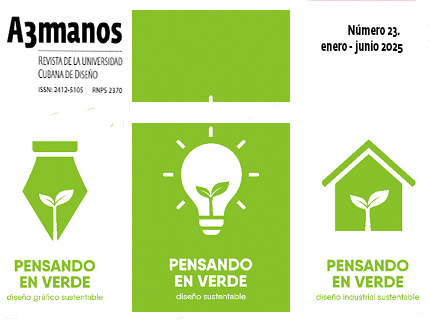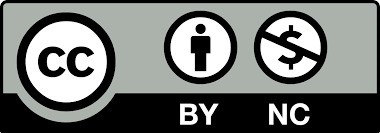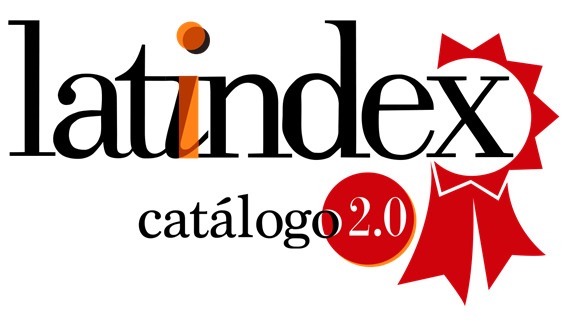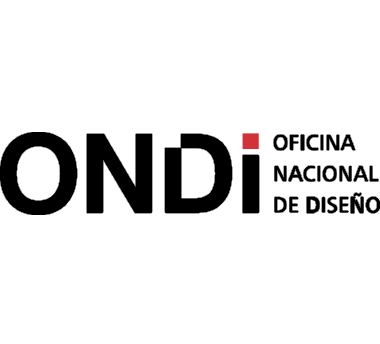Marketing y Diseño circular
##plugins.themes.bootstrap3.article.main##
Resumen
Debido a la necesidad de reducir la generación de residuos y de implementar patrones más sostenibles de producción y consumo, se plantea la economÃa circular como la vÃa fundamental para alcanzar dichas metas, y dentro de ella se destaca el diseño circular. La implementación exitosa del diseño circular depende, entre otros factores, de su capacidad para conectar con los consumidores y establecer mercados para productos circulares. En este contexto el marketing desempeña un papel clave. El presente artÃculo revisa la literatura cientÃfica sobre la interrelación entre el marketing y el diseño circular, explicando cómo el primero puede fomentar la aceptación de productos circulares y generar valor tanto para las empresas como para los consumidores.
##plugins.themes.bootstrap3.article.details##
Desde el Volumen 11, Número. 21, correspondiente al año 2024, esta licencia CC BY-NC 4.0 sustituye a la empleada en los números anteriores, a saber, CC BY-NC-SA 4.0

Esta obra está bajo una licencia internacional Creative Commons Atribución-NoComercial 4.0.
- Atribución â Usted debe dar crédito de manera adecuada , brindar un enlace a la licencia, e indicar si se han realizado cambios . Puede hacerlo en cualquier forma razonable, pero no de forma tal que sugiera que usted o su uso tienen el apoyo de la licenciante.
- NoComercial â Usted no puede hacer uso del material con propósitos comerciales .
- No hay restricciones adicionales â No puede aplicar términos legales ni medidas tecnológicas que restrinjan legalmente a otras a hacer cualquier uso permitido por la licencia.
- CompartirIgual â Si remezcla, transforma o crea a partir del material, debe distribuir su contribución bajo la misma licencia del original. NOTA: Este punto aplica para los números 1 al 20 de la revista con la anterior licencia CC-BY-NC-SA 4.0. No aplica para la nueva licencia CC BY-NC 4.0 desde el Volumen 11, Número. 21 (2024).
Citas
- Bocken, N., de Pauw, I., Bakker, C. & Van der Grinten, B. (2016). Product design and business model strategies for a circular economy. Journal of Industrial and Production Engineering, 33(5), 308-320.
- Botsman, R. & Rogers, R. (2010). What's mine is yours: the rise of collaborative consumption. Harper Business.
- Chouinard, Y. & Stanley, V. (2016). The responsible company: what we've learned from Patagonia's first 40 years. Patagonia Books.
- Delmas, M. A. & Burbano, V. C. (2011). The drivers of greenwashing. California Management Review, 54(1), 64-87.
- Ellen MacArthur Foundation (2013). Towards the circular economy: Vol. 1. Economic and business rationale for an accelerated transition.
- ESIC (2023). Marketing sostenible: qué es, estrategias y ejemplos. Recuperado de https://www.esic.edu
- Gazzola, P., Pavione, E., Pezzetti, R. & Grechi, D. (2017). Trends in the fashion industry. The perception of sustainability and circular economy: a gender/generation quantitative approach. Sustainability, 9(5), 923.
- Geissdoerfer, M., Savaget, P., Bocken, N. & Hultink, E. J. (2017). The circular economy. A new sustainability paradigm? Journal of Cleaner Production, 143, 757-768.
- Gleim, M. & Boluk, K. (2023). Sustainable consumer behavior through experiential marketing: how corporate social responsibility initiatives foster long-term brand loyalty. Journal of Sustainable Marketing, 13, 245â259. Recuperado de https://doi.org/10.1108/JSM-05-2022-0198
- Harris, F., Roby, H. & Dibb, S. (2016). Sustainable clothing: challenges, barriers and interventions for encouraging more sustainable consumer behavior. International Journal of Consumer Studies, 40(3), 309-318.
- Heinrichs, H. (2013). Sharing economy: a potential new pathway to sustainability. GAIA, 22(4), 228-231.
- Horne, R. E. (2009). Limits to labels: the role of eco-labels in the assessment of product sustainability and routes to sustainable consumption. International Journal of Consumer Studies, 33(2), 175-182.
- Informa BTL. (2023). Exitosas campañas de marketing sustentable que inspiran. Recuperado de https://www.informabtl.com
- Kotler, P. & Armstrong, G. (2018). Principles of marketing (17th ed.). Pearson.
- Labrecque, L. I. & Milne, G. R. (2012). Exciting red and competent blue: the importance of color in marketing. Journal of the Academy of Marketing Science, 40(5), 711-727. Recuperado de https://doi.org/10.1007/s11747-010-0245-y
- Lewandowski, M. (2016). Designing the business models for circular economy. Towards the conceptual framework. Sustainability, 8(1), 43.
- McDonough, W. & Braungart, M. (2002). Cradle to cradle: remaking the way we make things. North Point Press.
- Mugge, R., Jockin, B. & Bocken, N. (2017). How to sell refurbished smartphones? An investigation of different customer groups and appropriate incentives. Journal of Cleaner Production, 147, 284-296.
- Peattie, K. (2010). Green consumption: behavior and norms. Annual Review of Environment and Resources, 35, 195-228.
- Peattie, K. & Peattie, S. (2009). Social marketing: a pathway to consumption reduction? Journal of Business Research, 62(2), 260-268.
- Popower, C. (2023). EconomÃa circular y estrategia de marketing, ¿cuáles son los retos? ORSYS Le Mag. Recuperado de https://orsys-lemag.com/es/como-integrar-la-estrategia-de-marketing-de-economia-circular/
- Schenkel, M., Caniëls, M. C. J., Krikke, H. & Van der Laan, E. (2015). Understanding value creation in closed loop supply chains: past findings and future directions. Journal of Manufacturing Systems, 37, 729-745.
- Schmitt, B. (1999). Experiential marketing. Journal of Marketing Management, 15(1-3), 53-67.
- ___________ (2011). Experiential marketing: a framework for customer-centric strategies. Journal of Marketing Management, 27(5-6), 675â679. Recuperado de https://doi.org/10.1080/0267257X.2011.577203
- Solomon, M. R. (2017). Consumer behavior: buying, having, and being (12th ed.). Pearson.
- Stahel, W. R. (2016). The circular economy. Nature, 531(7595), 435-438.
- Sustainable Business Toolkit (2023). Building a sustainable brand: a guide for companies using recycled materials. Recuperado de https://www.sustainablebusinesstoolkit.com/sustainable-branding-guide
- Van der Velden, M. & Van de Weijer, L. (2021). Designing for Fairphoneâs modularity: a circular product design case study. Design Journal, 24(4), 645-665.
- Waheed, A., Zhang, Q. & Ahmad, A. (2021). How sustainable marketing influences customer engagement and purchase intentions: the role of CSR in sustainable brand development. Frontiers in Psychology, 12, 754â758. Recuperado de https://doi.org/10.3389/fpsyg.2021.789432
- Whelan, T. & Fink, C. (2016). The comprehensive business case for sustainability. Harvard Business Review.

























